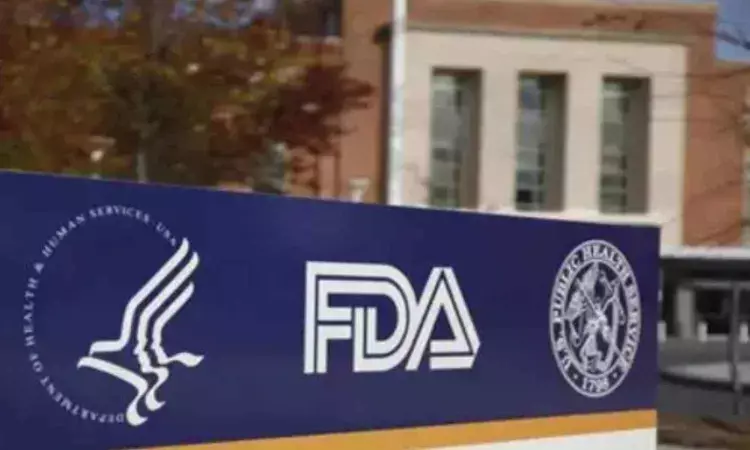- Home
- Medical news & Guidelines
- Anesthesiology
- Cardiology and CTVS
- Critical Care
- Dentistry
- Dermatology
- Diabetes and Endocrinology
- ENT
- Gastroenterology
- Medicine
- Nephrology
- Neurology
- Obstretics-Gynaecology
- Oncology
- Ophthalmology
- Orthopaedics
- Pediatrics-Neonatology
- Psychiatry
- Pulmonology
- Radiology
- Surgery
- Urology
- Laboratory Medicine
- Diet
- Nursing
- Paramedical
- Physiotherapy
- Health news
- Fact Check
- Bone Health Fact Check
- Brain Health Fact Check
- Cancer Related Fact Check
- Child Care Fact Check
- Dental and oral health fact check
- Diabetes and metabolic health fact check
- Diet and Nutrition Fact Check
- Eye and ENT Care Fact Check
- Fitness fact check
- Gut health fact check
- Heart health fact check
- Kidney health fact check
- Medical education fact check
- Men's health fact check
- Respiratory fact check
- Skin and hair care fact check
- Vaccine and Immunization fact check
- Women's health fact check
- AYUSH
- State News
- Andaman and Nicobar Islands
- Andhra Pradesh
- Arunachal Pradesh
- Assam
- Bihar
- Chandigarh
- Chattisgarh
- Dadra and Nagar Haveli
- Daman and Diu
- Delhi
- Goa
- Gujarat
- Haryana
- Himachal Pradesh
- Jammu & Kashmir
- Jharkhand
- Karnataka
- Kerala
- Ladakh
- Lakshadweep
- Madhya Pradesh
- Maharashtra
- Manipur
- Meghalaya
- Mizoram
- Nagaland
- Odisha
- Puducherry
- Punjab
- Rajasthan
- Sikkim
- Tamil Nadu
- Telangana
- Tripura
- Uttar Pradesh
- Uttrakhand
- West Bengal
- Medical Education
- Industry
FDA Approves New treatment option for cutting bleeding in Hemophilia A or B

Hemophilia A and hemophilia B are genetic bleeding disorders caused by a dysfunction or deficiency of coagulation factor VIII (FVIII) or IX (FIX), respectively. Patients with these hemophilias are unable to clot properly and may bleed for a longer time than normal after injury or surgery.
The U.S. Food and Drug Administration has approved Hympavzi (marstacimab-hncq) for routine prophylaxis to prevent or reduce the frequency of bleeding episodes in adult and pediatric patients 12 years of age and older with hemophilia A without factor VIII inhibitors or hemophilia B without factor IX inhibitors (neutralizing antibodies).
The FDA has granted the approval of Hympavzi to Pfizer Inc. Earlier the FDA had granted Hympavzi Orphan Drug designation for this application.
“Today’s approval of Hympavzi provides patients with hemophilia a new treatment option that is the first of its kind to work by targeting a protein in the blood clotting process,” said Ann Farrell, M.D., Director of the Division of Non-Malignant Hematology in the FDA’s Center for Drug Evaluation and Research. “This new type of treatment underscores the FDA’s commitment to advance the development of innovative, safe and effective therapies.”
Hympavzi is a new type of drug that, rather than replacing a clotting factor, works by reducing the amount, and therefore, the activity of, the naturally occurring anticoagulation protein called tissue factor pathway inhibitor. This increases the amount of thrombin, an enzyme that is critical in blood clotting, that is generated. This is expected to reduce or prevent the frequency of bleeding episodes.
Hympavzi’s approval is based on an open-label, multi-center study in 116 adult and pediatric male patients with either severe hemophilia A or severe hemophilia B, both without inhibitors. For the first six months of this study, patients received treatment with replacement factor either on-demand (33 patients) or prophylactically (83 patients). These patients then received Hympavzi prophylaxis for 12 months. The primary measure of efficacy of Hympavzi was the annualized bleeding rates of treated bleeds. In the patients receiving on-demand factor replacement during the first six months of the study, the estimated annualized bleeding rate was 38 compared to the estimated annualized bleeding rate during treatment with Hympavzi of 3.2, showing that Hympavzi was superior to on-demand factor replacement. In the initial six-month period during which patients received prophylactic factor replacement, the estimated annualized bleeding rate was 7.85 and was 5.08 during the subsequent 12 months on Hympavzi prophylaxis, showing that Hympavzi provided similar bleeding rates.
Hympavzi comes with warnings and precautions about circulating blood clots (thromboembolic events), hypersensitivity and embryofetal toxicity.
The most common side effects of Hympavzi are injection site reactions, headache and itching (pruritis).
Dr Kamal Kant Kohli-MBBS, DTCD- a chest specialist with more than 30 years of practice and a flair for writing clinical articles, Dr Kamal Kant Kohli joined Medical Dialogues as a Chief Editor of Medical News. Besides writing articles, as an editor, he proofreads and verifies all the medical content published on Medical Dialogues including those coming from journals, studies,medical conferences,guidelines etc. Email: drkohli@medicaldialogues.in. Contact no. 011-43720751


